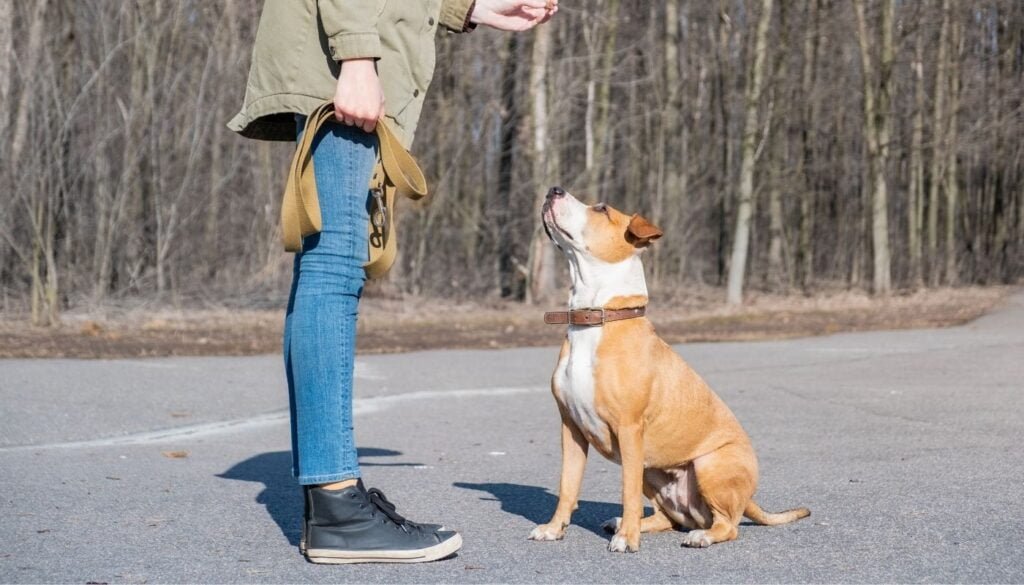How to tame an aggressive dog?
Dogs are considered to be the most faithful animals that exist in the world. It is said to be his master’s best friend. It is also said that nobody can love a man more than his furry pet. But sometimes, these furry friends become too aggressive to handle and in that case, you must know how to tame an aggressive dog. Let’s dive in!
Why do dogs behave aggressively?
Dogs can get aggressive not only towards other dogs, but also its owner. Such aggressive behavior is to be taken seriously. For this, the first thing to do is to understand the type of aggression in your dog. Secondly, try looking for warning signs of the same in your pet. This will take a lot of effort and patience. You may also like to consider getting professional help.
Dogs snap for various reasons. According to ASPCA, dogs are divided into these categories of hostility :
● Territorial aggression: The dog becomes defensive of its space or home from what it may consider an invader.
● Protective aggression: The dog becomes protective of its family against other animals or people. Thus, these dogs may lash out if anyone goes closer to them. Especially, mother dogs get incredibly vigilant about their pups.
● Fear aggression: Dogs become fearful for various reasons, such as abusive environments in animal shelters or abandonment at an early age—these dogs attack when they deem a situation getting fearful.
● Possessive aggression: The dog is possessive about the objects it is desirous of, such as its favorite toy or chew bones, and may snap while guarding it.
● Defensive aggression: These dogs react aggressively as they defend themselves and generally wish for solitude rather than attacking.
● Social aggression: Dogs that are not adequately trained for social interactions can get aggressive towards other dogs and even people.
Dogs can also act out when it is frustrated and is on a leash resulting in over-excitement during walks. Also, dogs don’t take it well when a person attempts breaking a dog fight and may redirect the anger over the individual trying so.
Sometimes, when a dog is in pain, it expresses itself through aggression. Even while playing, a dog’s predatory instincts may resurface, and the playful chase can turn into biting the individual or child.
Signs of aggression to look out for in your dog
Looking out for early signs of aggressiveness buys you time to chalk out a plan and get help at an appropriate time before the aggression results in an attack.
These are some behavioral patterns that dogs may show.
● Being rigid
● Grunting and snarling
● Clenching teeth
● Biting with light pressure causing bruises
● Biting repeatedly in succession
● Tucking their tali and wincing
● Turning their gaze
● Raised fur
These signs not only show aggression but may also suggest anxiety and fear issues.
How to tame an aggressive dog?
Treating aggression in dogs requires observation and identifying the environment and circumstances in which the aggression is triggered. Take notes whenever the aggression resurfaces. This will be an integral part of taking steps to control the behavior.
It is necessary to go to the root cause of aggression. The behavior is not the problem; aggression is only a symptom. There are a lot of things which you can do to help and manage your dog and make your life more fulfilling.
● Check with a Veterinarian
Sometimes, dogs develop aggression suddenly, and generally, these dogs aren’t aggressive. This might indicate a medical problem. Aggression in dogs is caused by numerous health problems such as injuries, hypothyroidism, epilepsy, brain tumors, and encephalitis.
Taking your dog to a doctor will clear out if any medical issue persists. Further, medication will help your dog’s behavior improve significantly.

● Take Professional help
If any medical issue is not diagnosed, then consider taking help from a professional. It is advised not to try helping your dog with aggression issues on your own as it can take a dangerous turn. Professionals such as dog trainers and animal behaviorists are better equipped to identify the triggers. They can devise a plan to reduce and manage it. For finding a professional, contact your veterinarian for legit referrals.
● Chalk out a plan
As advised in the previous step, take the professional’s help to devise a plan to counteract your dog’s aggression. This mostly includes giving rewards and instilling positive behavior.
If your dog gets triggered around strangers, then keep your dog at a safe distance from people. As you approach and reduce the distance, praise and reward your dog with treats teaching positive behavior. This can be used in varied circumstances.
● Collars
The best collars to be used in such cases are Prong collars. These collars do not choke like an ordinary collar if being pulled. It creates minor discomfort comparable to a mother’s nip, pointing out the dog’s improper behavior.
● Stay away from punishing
Punishment is never the right way to reduce aggression. Generally, punishments trigger defensive behaviors leading to increased aggression. Never hit or yell when your dog is growling. Next time, it may bite without indicating anger. Instead, be gentle and calm.
Finally, you may want to take the help of medications along with training. Drugs in such cases are temporary. Avoiding triggering situations will help a lot. Do consider the suggestions and have a happy time with your dog.




